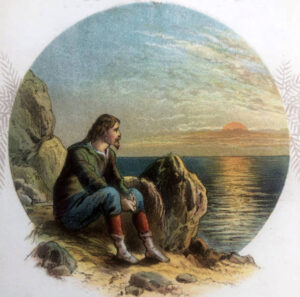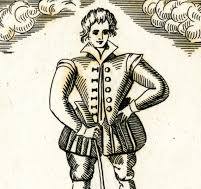The Five Elements of a Short Story
The Five Elements of a Short Story are:
- Setting
- Characterisation
- Plot or Narrative Structure
- Narration and Point of View
- Themes and Style
What is a Short Story?
A short story is a prose work that typically includes several key elements that work together to create a cohesive and engaging narrative. A short story can be read in a single sitting and covers a single event or a related sequence of events evoking a single effect or mood.
Origin of Short Stories:
The short story as a literary form has ancient roots, dating back to oral traditions and early written tales. Fables, parables, and folklore from various cultures can be seen as early examples of short stories.
- Classical Roots: In ancient Greece, works like Aesop’s Fables served as moral short stories. Similarly, in ancient India, stories like the “Panchatantra” provided life lessons through short, engaging tales.
- Development in the 19th Century: The modern short story began to take shape in the 19th century, with writers like Edgar Allan Poe in the United States and Anton Chekhov in Russia. Poe’s “The Tell-Tale Heart” and Chekhov’s “The Lady with the Dog” are classic examples that showcase the form’s power to explore psychological depth within a limited scope.
The average length of a short story may vary from writer to writer. It can be from the range of 1000 words to 15000 words.
I. Importance of Setting in a Short Story:

The setting is the time and place in which the story occurs. It provides the context and environment for the characters and plot. The setting can be as follows:
- Real-time and geographical location.
- Fantasy World with an unknown period.
Elements of the setting include:
- Location: The geographical place where the story happens.
- Time: The historical period, time of day, season, etc.
- Social Context: The cultural, social, and political environment.
II. Characterisation in a Short Story:
Characterisation is a method where an author describes or develops the main character and supporting characters in a story. There are two methods through which these characters are revealed in a short story: Direct characterisation or Indirect Characterisation.
- Direct Characterisation: The character is revealed through the narrator or by another character or the main character reveals attributes and aspects about himself/herself.
- Indirect Characterisation: The character is revealed through thoughts, feelings, and actions.
Characters

Characters are the individuals who take part in the action of the story. There are typically:
- Protagonist: The main character who drives the story forward. He is the central character of the story. He/she makes important choices and suffers the consequences of those decisions.
- Antagonist: The character or force that opposes the protagonist. He is the villain of the story. He threatens the main character in a variety of aspects.
- Round Characters: He/she is a complex character. They can neither be too cruel nor too kind. Their behaviour is unpredictable.
- Flat Characters: They are opposite of the round characters. They can be too cruel or too kind. A flat character is straightforward and clear.
- Dynamic Characters: This type of character grows and changes as the story progresses. It is a trait of the main character. They usually mature and evolve to get to the better side.
- Static Characters: A static character does not alter over time. He can be the father or coach of the main character. They can be intellectual, or enlightening regularly.
III. Plot or Narrative Structure:
The plot is the sequence of events that make up the story. It describes the framework of how the author tells the story. It is the most important element of the short story. It usually follows a specific structure, often including:
- Exposition: It is the beginning of the story. Introduces the setting, characters, and background information.
- Rising Action: Develops the main conflict or problem and builds tension. It usually starts with an inciting event.
- Conflict: Conflict is essential to the storyline because it connects events and drives the plot forward. Conflict is the struggle between opposing forces that drives the plot. There are two types of conflicts:
- Internal Conflict: A struggle within a character (man vs. self).
- External Conflict: A conflict between a character and an outside force (man vs. man, man vs. nature, man vs. society, etc.).
- Man vs. Man: It is a conflict between characters.
- Man vs. Nature: Conflicts occur with animals, the atmosphere, the climate, etc.
- Man vs. Society: Conflicts with other people’s beliefs, habits, and traditions.
- Climax: The turning point or most intense moment in the story.
- Falling Action: Events that follow the climax and lead to the resolution.
- Resolution: The conclusion where conflicts are resolved, and the story ends.
IV. Narration and Point of View:
- Purpose: The perspective from which the story is told.
- Types:
- First-Person: The narrator is a character in the story, using “I” or “we.”
- Third-Person Limited: The narrator knows the thoughts and feelings of one character.
- Third-Person Omniscient: The narrator knows the thoughts and feelings of all characters.
- Function: Point of view influences how the story is perceived and how much the reader knows about the character’s inner lives.
V. Theme & Style:
Theme:
- Purpose: The central idea or message that the story conveys.
- Types: Themes can be universal (e.g., love, loss, identity) or specific to the story’s context.
- Function: The theme provides depth and significance, offering the reader something to ponder beyond the immediate events of the story.
Style of a Short Story
The style of a short story refers to the distinctive way the author uses language to tell the story. It encompasses various elements like tone, diction, syntax, and narrative techniques that contribute to the overall voice and feel of the narrative. Here’s an overview of the key aspects that define the style of a short story:
- Tone:
- Definition: The attitude or emotional quality the author conveys through the narrative.
- Examples: The tone can be serious, humorous, ironic, melancholic, or suspenseful, depending on the story’s theme and subject matter.
- Impact: Tone sets the mood of the story, and influences how readers perceive the characters and events.
- Diction:
- Definition: The choice of words and vocabulary used by the author.
- Types:
- Formal: Uses sophisticated language and complex sentence structures.
- Informal: Uses conversational language, slang, and simple sentence structures.
- Colloquial: Reflects everyday speech, often specific to a region or culture.
- Impact: Diction shapes the reader’s understanding and can reveal character traits, social settings, and cultural contexts.
